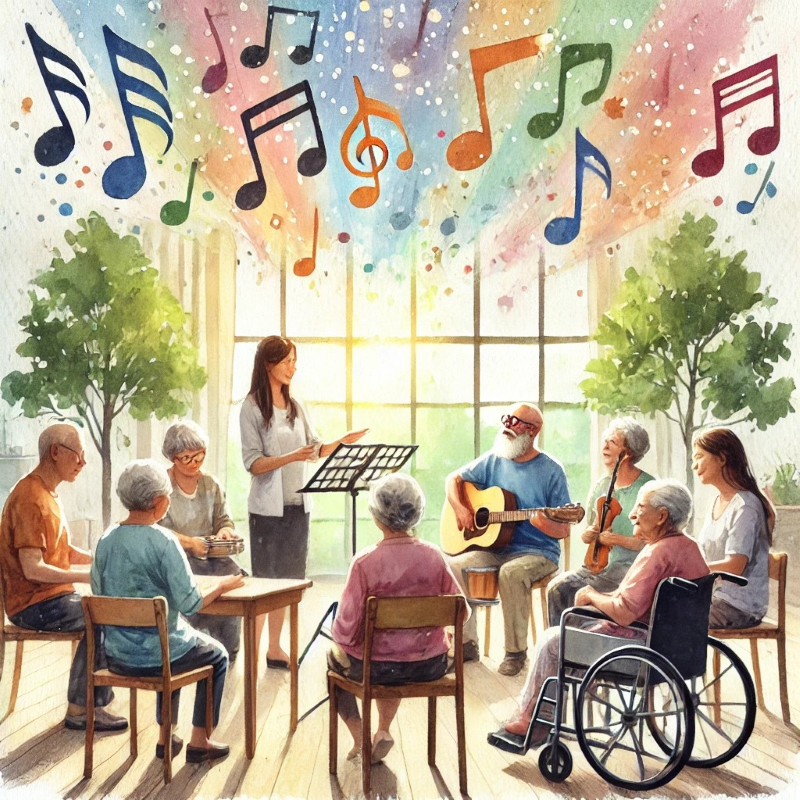The Role of Music Therapy in Parkinson’s Disease

Understanding Parkinson’s Disease
Parkinson’s disease is a neurodegenerative disorder characterized by a range of motor impairments (such as tremors, rigidity, and slow movements) and non-motor symptoms (including depression, anxiety, and cognitive decline). The disease predominantly affects the basal ganglia, leading to progressive degeneration of dopaminergic neurons, which are critical for motor control and various other brain functions.
Pharmacological Limitations
Pharmaceutical treatments, primarily focusing on dopamine replacement, often come with significant drawbacks. Long-term use of medications like Levodopa can result in drug resistance and levodopa-induced dyskinesias. Additionally, motor response fluctuations, poor bioavailability, and discontinuous drug delivery pose further challenges. With no cure available, the need for effective non-pharmacological interventions becomes increasingly critical.
Exploring Music Therapy
Music therapy involves the therapeutic use of music to improve mental, physical, and social well-being. It can be categorized into active (participation-based) and passive (listening-based) forms. The therapeutic effects of music stem from its ability to stimulate various brain areas, thus facilitating cognitive, motor, language, motivational, and emotional functions.
Mechanisms of Music Therapy
Music therapy’s efficacy is linked to brain plasticity, the brain’s ability to reorganize itself in response to stimulation. Music activates the brain regions responsible for cognitive and motor functions, language, motivation, and emotions, compensating for neurological damage caused by Parkinson’s. Rhythmic auditory cues, a key component of music therapy, help improve motor functions by stimulating brain areas involved in movement.
Benefits of Music Therapy for Parkinson’s Patients
Gait Impairment
Gait-related issues are common in Parkinson’s patients, often leading to falls and balance difficulties. Music therapy, particularly through rhythmic auditory stimulation, has shown significant improvements in gait parameters like stride length and speed. Studies indicate that internal cueing (e.g., singing) can be more effective than external cueing (e.g., listening to music) in enhancing gait recovery.
Tremors and Rigidity
Tremors, particularly in the hands, limbs, and mouth, are among the most noticeable symptoms of Parkinson’s. While pharmacological treatments have limited success, music therapy can promote mental relaxation and reduce tremors. Vibroacoustic therapy, which includes sound vibrations, has been found to improve movements and reduce tremor frequency.
Mood Disorders and Cognitive Function
Depression and anxiety are prevalent among Parkinson’s patients, often exacerbated by social isolation. Music therapy, especially through group activities like choral singing, can significantly improve mood, reduce stress, and enhance social connectedness. Additionally, music-based interventions have been shown to boost cognitive functions by activating brain areas involved in executive control and attention.
Quality of Life
The quality of life for Parkinson’s patients is often compromised due to impaired communication and motor functions. Music therapy can address both motor and non-motor symptoms, improving overall quality of life. Group singing and rhythm-based activities not only enhance vocal and respiratory functions but also promote social interaction and emotional well-being.
Recommendations and Future Directions
While the benefits of music therapy for Parkinson’s patients are well-documented, further research is needed to optimize and standardize these interventions. Personalized music therapy plans, guided by medical psychology, can maximize therapeutic outcomes. Additionally, integrating modern technologies, such as mobile applications that generate rhythmic auditory cues, presents new opportunities for enhancing treatment efficacy.
Conclusion
Music therapy offers a promising alternative for managing the complex symptoms of Parkinson’s disease. By leveraging the therapeutic effects of music on the brain, it provides a holistic approach to improving motor functions, mood, cognitive abilities, and overall quality of life. As research continues to explore the full potential of music therapy, it stands as a valuable tool in the broader landscape of Parkinson’s treatment.
SEO Keywords: Parkinson’s, music therapy, non-pharmacological treatment, gait impairment, tremors, cognitive function, mood disorders, quality of life, rhythmic auditory stimulation, brain plasticity.
AI-generated medical content is not a substitute for professional medical advice or diagnosis; I hope you found this blog post informative and interesting. www.parkiesunite.com by Parkie
DALL-E Prompt for Watercolor Image
“Create a watercolor image of a serene therapy session where Parkinson’s patients are engaged in a group music therapy session. The setting should be warm and inviting, with patients playing instruments, singing, and interacting with a therapist in a bright, airy room filled with natural light and colorful musical notes floating in the air.”
SEO Keywords: Parkinson’s, music therapy, non-pharmacological treatment, cognitive function, quality of life.